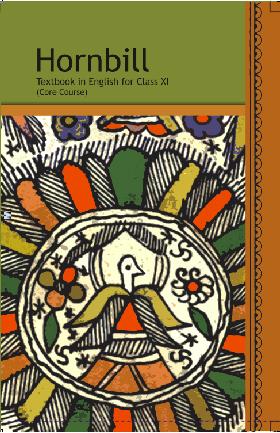
myCBSEguide App
Download the app to get CBSE Sample Papers 2023-24, NCERT Solutions (Revised), Most Important Questions, Previous Year Question Bank, Mock Tests, and Detailed Notes.
Install NowNCERT Solutions for class 11 English Core Hornbill We are Not Afraid to Die Class 11 English Core Class book solutions are available in PDF format for free download. These ncert book chapter wise questions and answers are very helpful for CBSE board exam. CBSE recommends NCERT books and most of the questions in CBSE exam are asked from NCERT text books. Class 11 English Core chapter wise NCERT solution for English Core part 1 and English Core part 2 for all the chapters can be downloaded from our website and myCBSEguide mobile app for free.
Download NCERT solutions for Hornbill We are Not Afraid to Die as PDF.

NCERT Class 11 English Core Chapter-wise Solutions
English core Part I (Hornbill)
- 1 : The Portrait Of A Lady Summary
- 2 : A Photograph Summary
- 3 : We’re Not Afraid To Die…If We Can All Be Together Summary
- 4 : Discovering Tut: The Saga Continues Summary
- 5 : The Voice Of The Rain Summary
- 6 : The Ailing Planet: The Green Movement’s Role Summary
- 7 : The Browning Version Summary
- 8 : Childhood Summary
- 9 : Father To Son Summary
English core Part II (Snapshot)
- 1- The Summer of the Beautiful White Horse
- 2- The Address
- 3- Ranga’s Marriage
- 4- Albert Einstein at School
- 5- Mother’s Day
- 6- The Ghat of the only World
- 7- Birth
- 8- The Tale of Melon City
NCERT Solutions for class 11 English Core Hornbill We are Not Afraid to Die
1. Notice these expressions in the text. Infer their meaning from the context.
i) honing our seafaring skills
ii) ominous silence
iii) Mayday calls
iv) pinpricks in the vast ocean
v)a tousled head
Page No: 18 Understanding the Text
1. List the steps taken by the captain
(i) to protect the ship when rough weather began.
(ii) to check the flooding of the water in the ship.
2.Describe the mental condition of the voyagers on 4 and 5 January.
3.Describe the shifts in the narration of the events as indicated in the three sections of the text. Give a subtitle to each section.
Talking about the Text
1.What difference did you notice between the reaction of the adults and the children when faced with danger?
2.How does the story suggest that optimism helps to endure “the direst stress”?
3.What lessons do we learn from such hazardous experiences when we are face-to-face with death?
4. Why do you think people undertake such adventurous expeditions in spite of the risk involved?
Thinking about Language
1. We have come across words like `gale’ and `storm’ in the account. Here are two more words for `storm’: typhoon, cyclone. How many words does your language have for `storm’?
1. Here are the terms of different kinds of vessels: yacht, boat, canoe, ship, steamer, schooner. Think of similar terms in your language.
2.‘Catamaran’ is a kind of a boat. Do you know which Indian language this word is derived from? Check the dictionary.
3. Have you heard any boatmen’s songs? What kind of emotions do these songs usually express?
Working with Words
1. The following words used in the text as ship terminology are also commonly used in another sense. In what contexts would you use the other meaning?
Knot, stern, boom, hatch, anchor
2.The following three compound words end in-ship. What does each of them mean?
airship, flagship, lightship
3.The following are the meaning listed in the dictionary against the phrase `take on’. In which meaning is it used in the third paragraph of the account:
| Take on sth: | to begin to have a particular quality or appearance; to assume sth |
| take sb on: | to employ sb; to engage sb to accept sb as one’s opponent in a game,contest or conflict |
| Take sb/sth on: | to decide to do sth; to allow sth/sb to enter e.g. a bus, plane or ship; to take sth/sb on board |
Answer: In the third paragraph, in lines: “… we took on two crewman to help us tackle … roughest seas…”, the word “took on” suggests to take somebody on i.e., to employ or engage somebody.
NCERT Solutions for Class 11 English Core
NCERT Solutions Class 11 English Core PDF (Download) Free from myCBSEguide app and myCBSEguide website. Ncert solution class 11 English Core includes text book solutions from both part 1 and part 2. NCERT Solutions for CBSE Class 11 English Core have total 21 chapters. 11 English Core NCERT Solutions in PDF for free Download on our website. Ncert English Core class 11 solutions PDF and English Core ncert class 11 PDF solutions with latest modifications and as per the latest CBSE syllabus are only available in myCBSEguide
CBSE app for Class 11
To download NCERT Solutions for class 11 Physics, Chemistry, Biology, History, Political Science, Economics, Geography, Computer Science, Home Science, Accountancy, Business Studies and Home Science; do check myCBSEguide app or website. myCBSEguide provides sample papers with solution, test papers for chapter-wise practice, NCERT solutions, NCERT Exemplar solutions, quick revision notes for ready reference, CBSE guess papers and CBSE important question papers. Sample Paper all are made available through the best app for CBSE students and myCBSEguide website.

Test Generator
Create question paper PDF and online tests with your own name & logo in minutes.
Create Now
myCBSEguide
Question Bank, Mock Tests, Exam Papers, NCERT Solutions, Sample Papers, Notes
Install Now